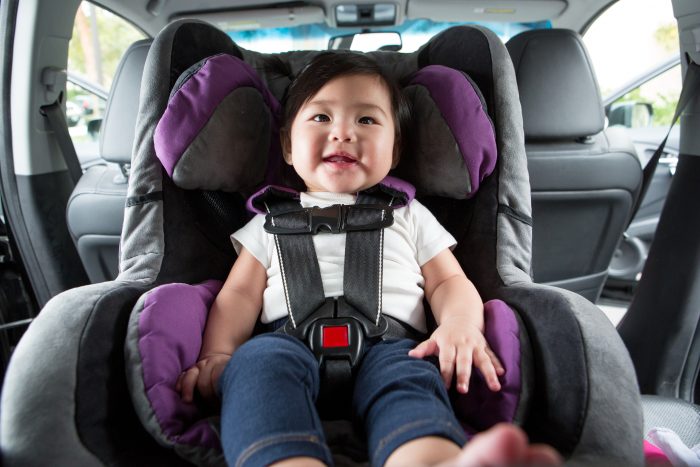New Car Seat Guidelines Released August 2018
 Keeping our youngest loved ones safe and giving them the chance to grow up happy and healthy is every parent’s goal. Car seats, once considered a hassle are now shown to help decrease the risk of death or serious injury to children by over 70%. Still the constant advances in technology of both automobiles and car seats has meant that regulations and guidelines must be updated to adapt to these changes.
Keeping our youngest loved ones safe and giving them the chance to grow up happy and healthy is every parent’s goal. Car seats, once considered a hassle are now shown to help decrease the risk of death or serious injury to children by over 70%. Still the constant advances in technology of both automobiles and car seats has meant that regulations and guidelines must be updated to adapt to these changes.
In August 2018, the American Academy of Pediatrics (AAP) announced that they are issuing an update to the policy statement and technical report Child Passenger Safety. This is occurring in response to new evidence that has been gathered over the last 10 years.
For full reference, the updated documents are currently available online at https://doi.org/10.1542/peds.2018-2460 and https://doi.org/10.1542/peds.2018-2461, and will be published in the November 2018 issue of Pediatrics.
The new guidelines are very similar to the old. The main change is removing the specific 2-year age limit for when a child changes from rear-facing to forward-facing car seats. The following is a summary of the guidelines with the updated recommendation:
- Children should ride in a rear-facing car safety seat as long as possible, up to the limits of their car safety seat. This will include virtually all children under 2 years of age and most children up to age 4.
- Once they have been turned around, children should remain in a forward-facing car safety seat up to that seat’s weight and length limits. Most seats can accommodate children up to 60 pounds or more.
- When they exceed these limits, child passengers should ride in a belt-positioning booster seat until they can use a seat belt that fits correctly.
- Once they exceed the booster limits and are large enough to use the vehicle seat belt alone, they should always use a lap and shoulder belt.
- All children younger than 13 years should be restrained in the rear seats of vehicles for optimal protection.
When the AAP initially issued the 2-year rear-facing guidelines, in 2011, it was intensely discussed. However, since then, car seat manufacturers have made great strides in developing products that allow children to easily ride rear-facing up to 40 pounds. This allows almost all children to remain rear-facing through their 2nd birthday, and even beyond. In fact, at this time, there are no car seats being manufactured that allow for forward facing for a child less than a year old. Several of them state that all children under 2 should remain rear-facing. Most car seats on the market today will easily rear face even above average height and weight kids until 3-4 years of age.
All available evidence continues to show the benefits of rear-facing for young children.
Children want to grow up and do the next “big kid” thing, even at a young age. Car seat safety is one area where delaying that milestone can make a tremendous and potentially life-saving difference.
Give their bodies, especially their spine, more time to grow and develop in order to best protect them in the event of an accident. More information on why rear-facing is important can be found at https://www.tnchiro.com/articles/why-rear-facing/.
There are many things out of our control when it comes to protecting our children when traveling on the road – providing a safe car seat is one thing we CAN do.
Ask your doctor of chiropractic any questions you have regarding the development of your child’s spine. Chiropractic care is safe and effective for all ages – even as young as a newborn, so it’s never too early for an initial consult. Correcting any misalignments when they occur will help your child grow and develop into a healthy adult.
You can find a TCA member doctor near your home, work or school at https://www.tnchiro.com/find-a-doctor/ .
REFERENCES:
Hoffman, M.D., FAAP, Benjamin D., “New child passenger safety seat guidance advises kids to ride rear-facing as long as possible; drops age criterion” American Academy of Pediatrics, August 30, 2018.